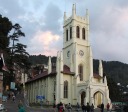Exploring The History of The Kalka-Shimla Mountain Railway: A UNESCO Heritage Toy Train Journey
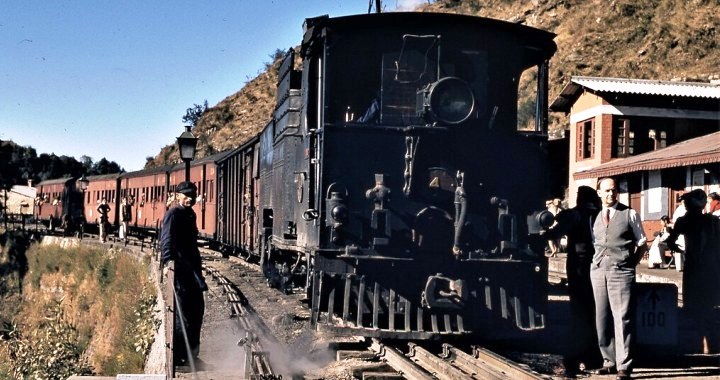
The road from Kalka to Shimla came to be used for, wheeled traffic by the year 1860. In 1864, Sir John Lawrence, then Viceroy of India (from 1864 to 1869), officially declared Simla the Summer Capital of British India, initiating its crucial role in colonial administration. Each year, the British government would relocate to Simla from early April to October, transforming the town into the hub of governance for the Indian subcontinent. This annual migration was no small feat—Viceroys, military attachézs, and nearly 5,000 clerks, along with their families and servants, undertook a grueling 1,200-mile journey from Calcutta to Simla. Over five arduous days, they traveled by horse, elephant, bullock cart, and sedan chair, enduring rugged terrains to reach the cooler climes of Shimla, ensuring the continuity of governance despite the searing heat of the plains.
Exploring the Kalka – Shimla Toy Train Railway: A Scenic Voyage Through the Foothills of Himalayas
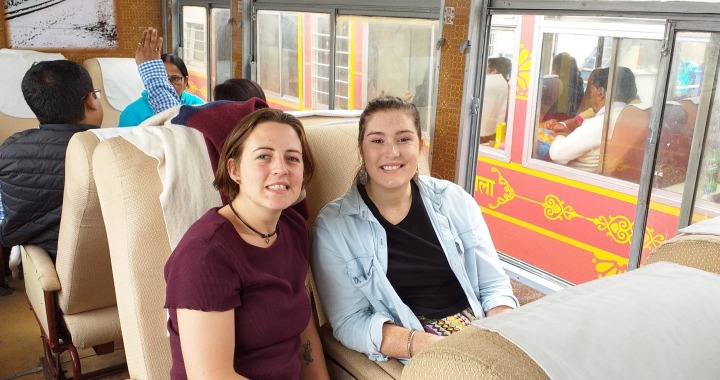
The Kalka–Shimla Railways a toy train, is a narrow-gauge line measuring 95.68 km (59.45 mile), just 2 feet 6 inches wide, was completed on November 9, 1903, during the Viceroyalty of Lord Curzon, to provide easier access to Shimla, the Summer Capital of British India. This engineering marvel not only made the journey more accessible but also remains a lasting testament to the ingenuity of mountain railway construction. It is one of the longest narrow gauge railway routes still operating in India.
The Kalka–Shimla Toy Train offers unparalleled views of the Shivalik ranges, verdant valleys, and charming hillside villages. As you traverse the 95.68-kilometer route, you'll pass through 103 tunnels (102 currently active), cross over 864 bridges, and navigate 919 curves, each offering its own unique perspective on the surrounding landscape. Guided Kalka Shimla Toy Train tours by Summit Safari India provide insightful commentary, sharing the rich history of the railway and the stories behind its construction.
The Vision and Construction of the Kalka–Shimla Railway
The idea for a railway to Shimla emerged in the 1840 , gaining momentum by the late 19th century. The opening of the 5 ft 6 in (1,676 mm) broad gauge Delhi–Kalka line in 1891 made it feasible to construct a branch line to Shimla.
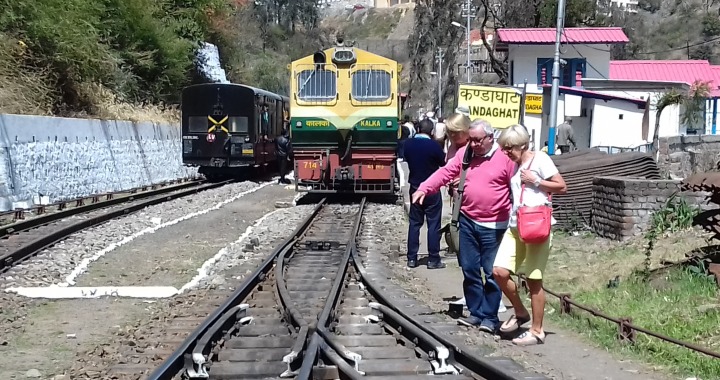
The earliest survey for the Kalka Shimla railway was conducted in 1884, followed by another in 1885. Based on these surveys, a project report was submitted to the British Indian government in 1887. Subsequent surveys in 1892 and 1893 resulted in four proposed alternatives: two adhesion lines, measuring 67.25 miles (108.23 km) and 69.75 miles (112.25 km), and two rack lines. Further assessments in 1895, focusing on the route from Kalka to Solan, aimed to determine whether to adopt a 1 in 12 rack system or a 1 in 25 adhesion line.
After extensive surveys and discussions , an adhesion line was chosen over a rack system for the project.
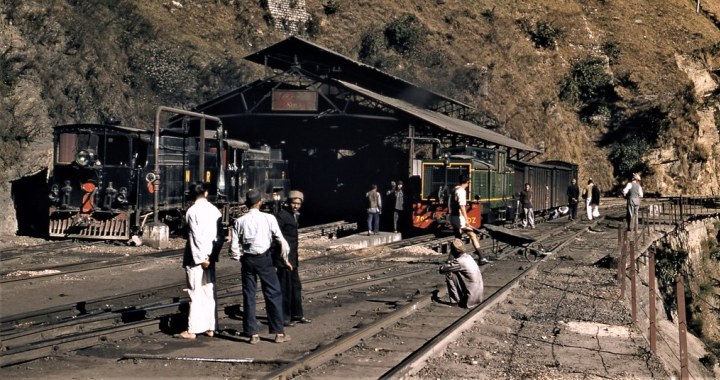
Construction commenced on 2 ft (610 mm) narrow-gauge tracks on June 29, 1898, under Chief Engineer Herbert Septimus Harington and Chief Contractor Sujan Singh Hadaliwale by The Delhi-Ambala-Kalka Railway Company. A contract was signed between the secretary of state and the company and as per the contract, the rail line was to be built without any pecuniary aid or guarantee from the government. The land was, however, provided free of charge to the company. The estimated cost of Rs 86, 78,500, doubled during execution of the project.
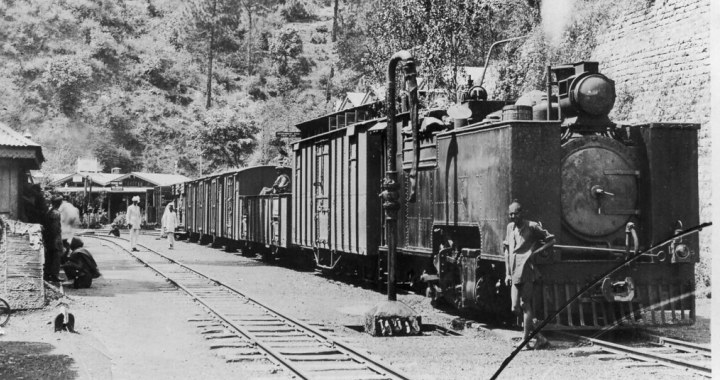
The British Indian Army was concerned about the 2 foot gauge selected for the railway and requested a wider standard gauge for mountain and strategic railways. The government eventually agreed that the narrower gauge was insufficient for a capital city and military needs. Consequently, on November 15, 1901, the contract with the railway company was updated to change the gauge to 2 feet 6 inches (762 mm), and the existing track was regauged. However, some sources suggest that this regauging was undertaken until 1905.
The kalka Shimla railway line measuring 95.68 km (59.45 mile) from Kalka to Shimla was opened for trains on November 9, 1903 during the Viceroyalty of Lord Curzon. This Kalka Shimla narrow gauge line was further extended from Shimla to Shimla Goods (which had once housed the bullock cart office) on 27 June 1909 making it 96.60 km (60.02 mi).
Due to the unique working conditions, which included high capital and maintenance costs, the Kalka–Shimla Railway was permitted to charge fares significantly higher than those on other plains railways. By 1904, the total expenditure had reached Rs. 1,65,25,000, leading the company into a severe financial crisis. In response to the company's representation, the British India Government purchased the railway on January 1, 1906, for Rs. 1,71,07,748.
The Evolution of Locomotives on the Kalka–Shimla Railway
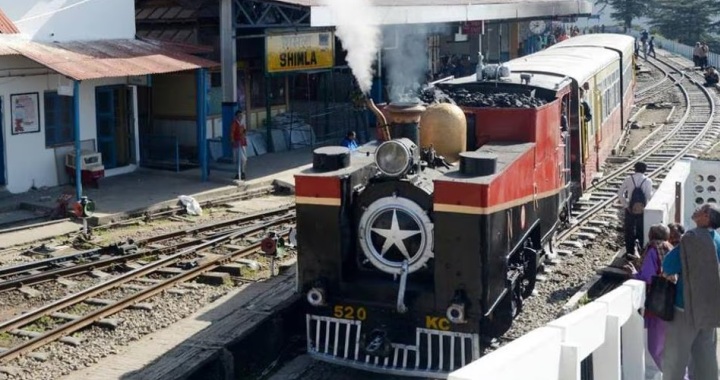
In the early days of the Kalka–Shimla Railway, steam locomotives powered the trains, which initially comprised only four coaches. Over time, these steam engines have been replaced by modern diesel engines, allowing for trains to operate with six to seven coaches. The first locomotives, sourced from the renowned Darjeeling Himalayan Railway, arrived in 1901. These were built as 2 ft (610 mm)-gauge engines, but were converted to 2 ft 6 in (762 mm)-gauge in 1901.
Subsequently, locomotives were manufactured by two prominent British firms: Sharp Stewart and Company, and the Hunslet and North British Locomotive Company, which produced engines between 1902 and 1910. Later classed K and K2 by the North Western State Railway, they handled most of the rail traffic during the steam era. Regular steam-locomotive operation ended in 1971.
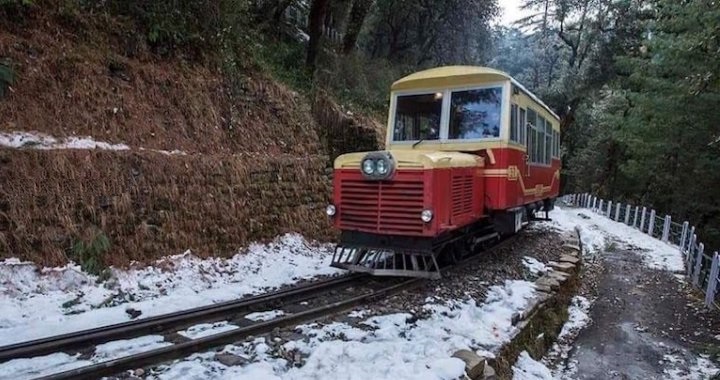
Rail motor cars were introduced in the 1910s and represented the height of luxury travel, primarily serving the Viceroys (Governor Generals) on their journeys from Kalka to Shimla.
Notably, these motor cars had the unique distinction of transporting Mahatma Gandhi to Shimla in 1945 for the Shimla Conference, where he engaged in discussions with Viceroy Wavell regarding British plans for India's independence.
Today, visitors can still view one of the old locomotives preserved in a yard at the Kalka or Shimla railway station, serving as a reminder of the railway's rich history.
Engineering Feat of the Kalka–Shimla Toy Train
The Kalka–Shimla Railway is more than just a mode of transportation; it is a testament to the ingenuity and determination of its creators. Spanning 95.68-kilometer (59.45 miles), the route climbs from Kalka at 656 meters above sea level to Shimla at 2,076 meters. The journey takes approximately 5 hours, with the train traveling at a leisurely pace of 15-20 km/h, allowing passengers to soak in the breathtaking views of the Shivalik ranges and the Himalayan foothills.

The railway features 18 stations, 103 tunnels (102 currently active), 864 bridges, and 919 curves. Among these, Tunnel No. 33 (Barog Tunnel) is the longest and straightest, stretching 1,143 meters. It is named after the engineer Barog, whose tragic story is woven into the tunnel’s history.
Another notable tunnel is Tunnel No. 10, known as the "Koti Tunnel," measuring 750 meters in length.
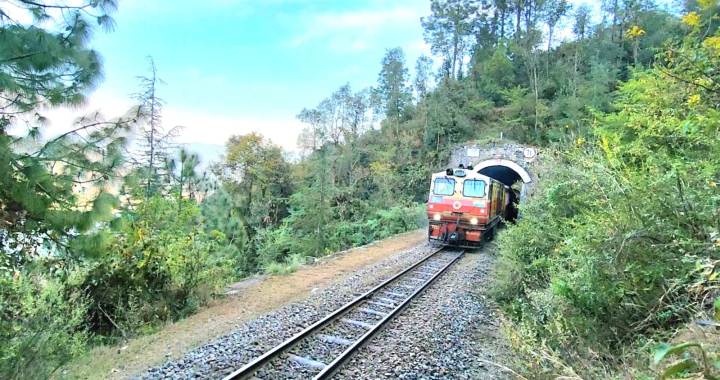
The bridges along the Kalka–Shimla Railway are remarkable feats of engineering, notably including Bridge No. 493, known as the Arch Gallery Bridge, Bridge No. 226, which spans a deep valley between Sonwara and Dharampur is the longest arch gallery bridge of the Kalka Shimla railways. The latter required a unique construction approach, consisting of five-tiered galleries, with each level featuring its own stone arches. Additionally, Bridge No. 541 at Kanoh railway station stands out as an architectural masterpiece. These bridges, built with traditional stone masonry, exemplify the extraordinary engineering skills and craftsmanship of the era.
Bridge No. 541: The Tallest Arch Gallery Bridge on Indian Railways
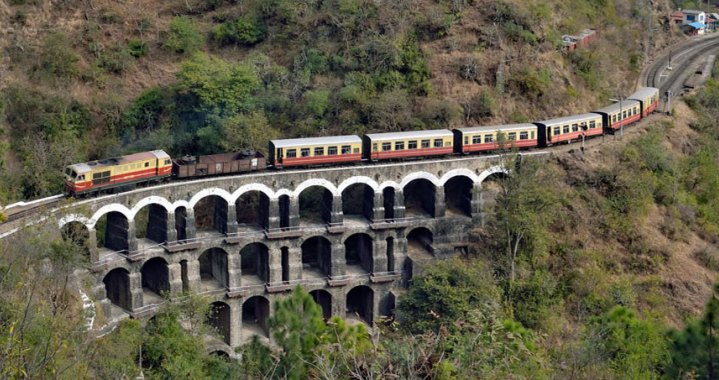
Bridge No. 541, completed in 1898, stands as the highest arch gallery bridge on the Indian Railways, situated between Kandaghat and Kailthalighat railway stations near Kanoh. This remarkable structure features 4 stories and a total of 34 arches, showcasing an exceptional blend of architectural beauty and civil engineering expertise. Constructed using economical local materials such as stones, bricks, and lime mortar, this multi-arched gallery bridge measures 52.90 meters in length and rises to 23 meters in height.
What makes Bridge No. 541 particularly unique are its four stories, each with a distinct configuration of arches, as well as its track, which navigates a steep gradient and incorporates a 48-degree reverse curve. This combination of features not only designates it as the tallest bridge along the Kalka–Shimla railway route but also cements its status as a significant engineering achievement within the Indian Railways.
Colonel Barog and the Tragic Tale of Tunnel No. 33
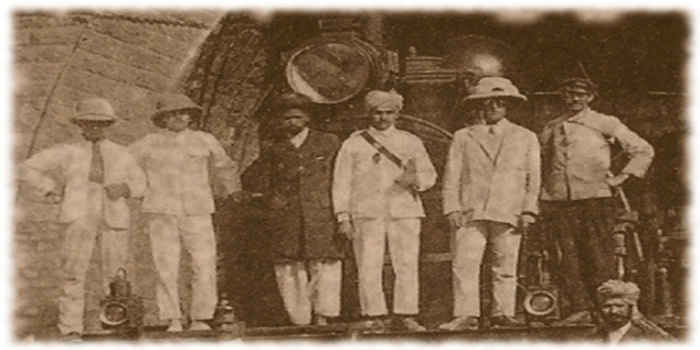
According to the history, Colonel Barog, the chief engineer for the railway, was tasked with excavating Tunnel No. 33 from both ends, with the aim of meeting in the middle. Unfortunately, he was unable to achieve this goal, leading to significant embarrassment and a fine of one rupee imposed by the company. Overcome by humiliation, he tragically took his own life in the hills near the tunnel, where he was subsequently buried.
After Colonel Barog's death, the railway's new chief engineer, Mr. H.S. Harrington, enlisted the help of a local shepherd named Balku Baaba, who’s invaluable assistance to the British engineers was instrumental in the successful completion of Tunnel No. 33, marking a significant achievement for the Kalka–Shimla Mountain Railways - The Toy Train.
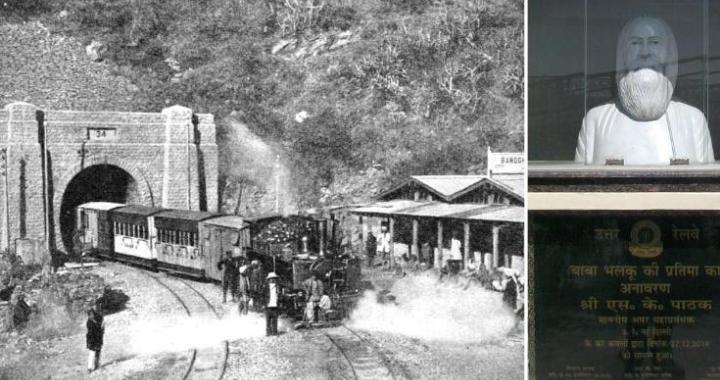
In remembrance of Colonel Barog, the tunnel and the nearby station were named after him “BAROG”.
This tunnel No 33 is notable for being both the longest measuring 1,143 meters (3,750 feet), and the straightest along the track, situated 900 feet below the main road.
Today, Tunnel No. 33 not only stands as an engineering marvel but also as a testament to Barog's dedication and the challenges of the Kalka–Shimla Railway's construction, adding historical depth to this scenic journey.
Another notable structure along the route is Tunnel No. 10, also referred to as the "Koti Tunnel." This tunnel spans 750 meters in length and is named after the nearby Koti railway station.
A UNESCO World Heritage Site
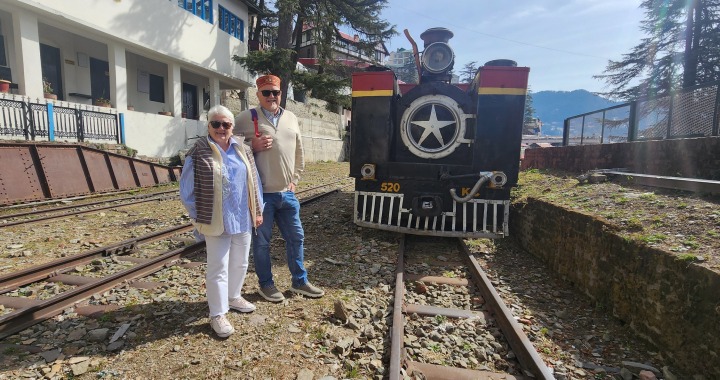
The track was inaugurated by the Viceroy of India, Lord Curzon, in 1903, and the toy train has been operating regularly ever since. Even today, British travelers enjoy the nostalgic charm of this iconic journey. In recognition of its historical and engineering significance, the Kalka–Shimla Railway was designated a UNESCO World Heritage Site on July 7, 2008. Today, a few deluxe and ordinary trains, including the vintage Rail Motor Car from 1927, continue to ply the route, offering passengers a unique travel experience. The Rail Motor Car is particularly famous for having transported Mahatma Gandhi to Shimla in 1945 for talks with Viceroy Wavell.
The Kalka–Shimla Toy Train Experience

The Kalka–Shimla Toy Train is more than just a journey—it's an unforgettable experience that immerses travelers in the breathtaking beauty of the Himalayas. As the train winds through the mountains, passengers are treated to panoramic views of lush forests, terraced fields, and quaint villages nestled in the valleys. The changing scenery, from verdant greenery to mist-covered peaks, offers a visual feast at every turn.
The train's leisurely pace allows ample time to appreciate the stunning landscapes, with the majestic Shivalik ranges providing a dramatic backdrop. The route's 103 tunnels, 864 bridges, and 919 curves add to the adventure, making each moment on this historic railway a delight for both the eyes and the soul.
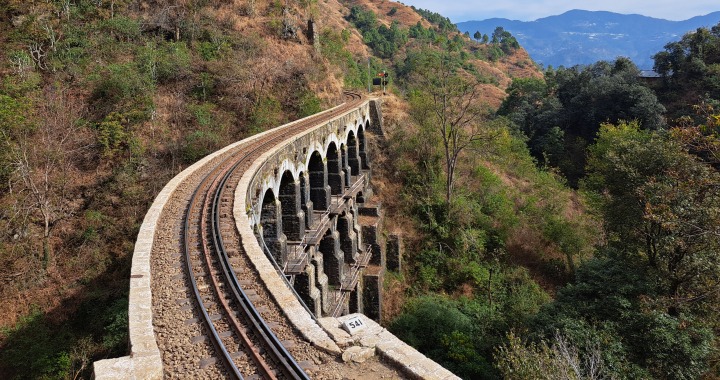
Whether you're captivated by the engineering marvel of the narrow-gauge line or simply wish to soak in the serene beauty of the mountains, the Kalka–Shimla Toy Train offers a unique way to experience the Himalayas. This iconic journey, with its blend of history, nature, and adventure, is a must-do for anyone visiting Shimla, promising memories that will last a lifetime.
Plan Your Kalka–Shimla Toy Train Journey with Summit Safari India
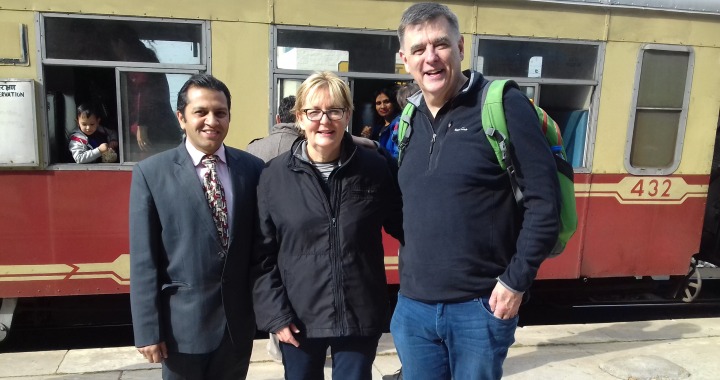
Embark on a journey through time and nature with the Kalka–Shimla Toy Train, an iconic experience that brings together history, engineering marvels, and breathtaking mountain views. With Summit Safari India, you can plan a customized itinerary that captures the essence of this UNESCO World Heritage Site, ensuring that your trip is as memorable as it is unique.
Whether you're looking for a short 2-3 hour Kalka Shimla toy train journey to capture the highlights of the Kalka–Shimla route or a full day experience that allows you to explore every twist and turn of this historic railway, we can craft an itinerary that suits your schedule and interests. Our personalized tours ensure that you don't just see the sights—you truly experience the magic of the Foothills of Himalayas.
Hassle-Free Travel Arrangements
Leave the logistics to us. From booking your train tickets to arranging private transfers to and from the stations, Summit Safari India takes care of every detail, ensuring a seamless travel experience. We can also arrange accommodations in Shimla or along the route, from luxurious hotels to charming heritage properties, allowing you to extend your journey and fully immerse yourself in the region's beauty and history.
Experience the Best of Shimla and Beyond
In addition to the toy train journey, our customized itineraries can include guided tours of Shimla's most iconic sites, such as the Viceregal Lodge, Christ Church, and The Ridge. For those seeking adventure, we can also organize nature walks, treks, or cultural tours in and around Shimla, offering a deeper connection to the region’s rich heritage and natural wonders.
Book Your Kalka–Shimla Toy Train Experience Today
Don’t miss out on this once-in-a-lifetime experience. Whether you're traveling solo, with family, or in a group, Summit Safari India is here to make your Kalka–Shimla Toy Train journey truly unforgettable. Contact us today to start planning your customized itinerary, and let us help you create memories that will last a lifetime.
The Kalka Shimla Railway Route and Railway Stations
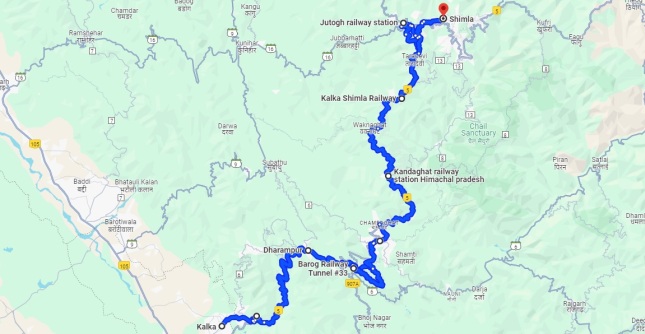
Kalka: 0 km
Taksal: 6 km
Gumman: 11 km
Koti: 17 km
Sonwara: 27 km
Dharampur: 33 km
Kumarhatti: 39 km
Barog: 43 km
Solan: 47 km
Salogra: 53 km
Kandaghat: 59 km
Kanoh: 65 km
Kathleeghat: 73 km
Shoghi: 78 km
Taradevi: 85 km
Jatogh: 90 km
Summer Hill: 93 km
Shimla: 96 km
The Kalka–Shimla Mountain Railway route journey takes passengers past charming stops such as Dharampur, Solan, Kandaghat, Taradevi, Barog, Salogra, Totu (Jutogh), and Summerhill, culminating in Shimla, which is perched at an altitude of 2,075 meters (6,808 feet). This scenic route features a remarkable elevation difference of 1,419 meters (4,656 feet) between its two endpoints, offering breathtaking views of the surrounding landscape.
Railway Stations and Distances
Embark on this historic journey and witness firsthand the grandeur of the Kalka–Shimla Mountain Railways .
 Video Vlogs:
Video Vlogs:  WhatsApp: +91 9805051102
WhatsApp: +91 9805051102 Email: vishal@summitsafari.com
Email: vishal@summitsafari.com


